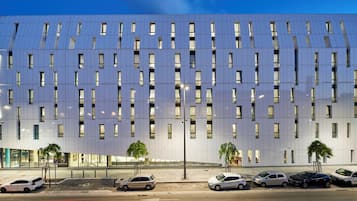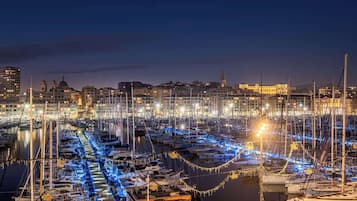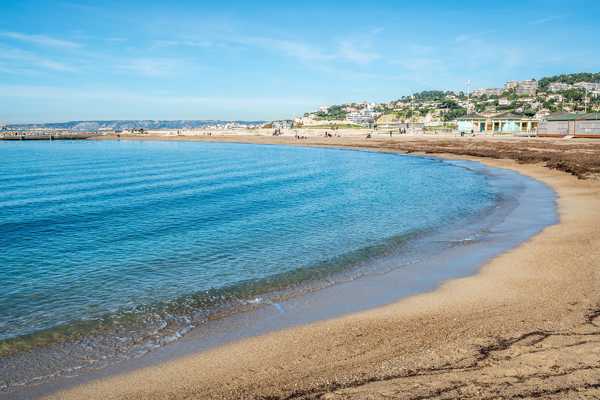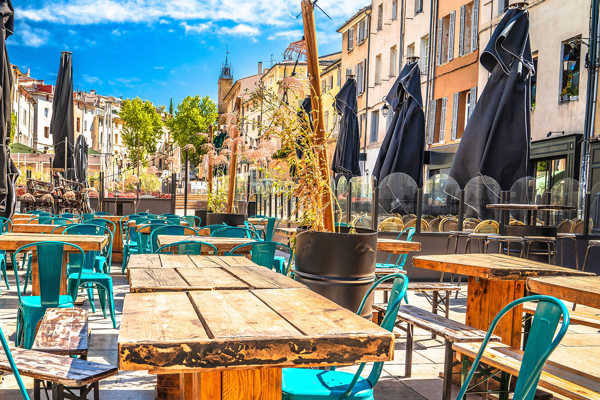Cathédrale La Major is one of the largest cathedrals in 19th-century Europe. Its architecture uses a Romanesque-Byzantine style that imitates eastern churches, with a striped facade of different coloured stones and numerous ornate domes and cupolas. Commanding magnificent views of Marseille's port, the cathedral stands in the historic district of Le Panier.
Marseille is the biggest port in France, and for centuries, ships from all over the world would pass by the cathedral's majestic facade as they arrived at the harbour. Today, Marseille residents are drawn to the cathedral for prayer and contemplation, while tourists are attracted to its stunning interior and important religious relics. The building is affectionately known by locals as 'La Major'.
Cathédrale La Major in Marseille - one of the highlights of 11 Best Things to Do in Marseille and 10 Most Instagrammable Places in Marseille (Read all about Marseille here)
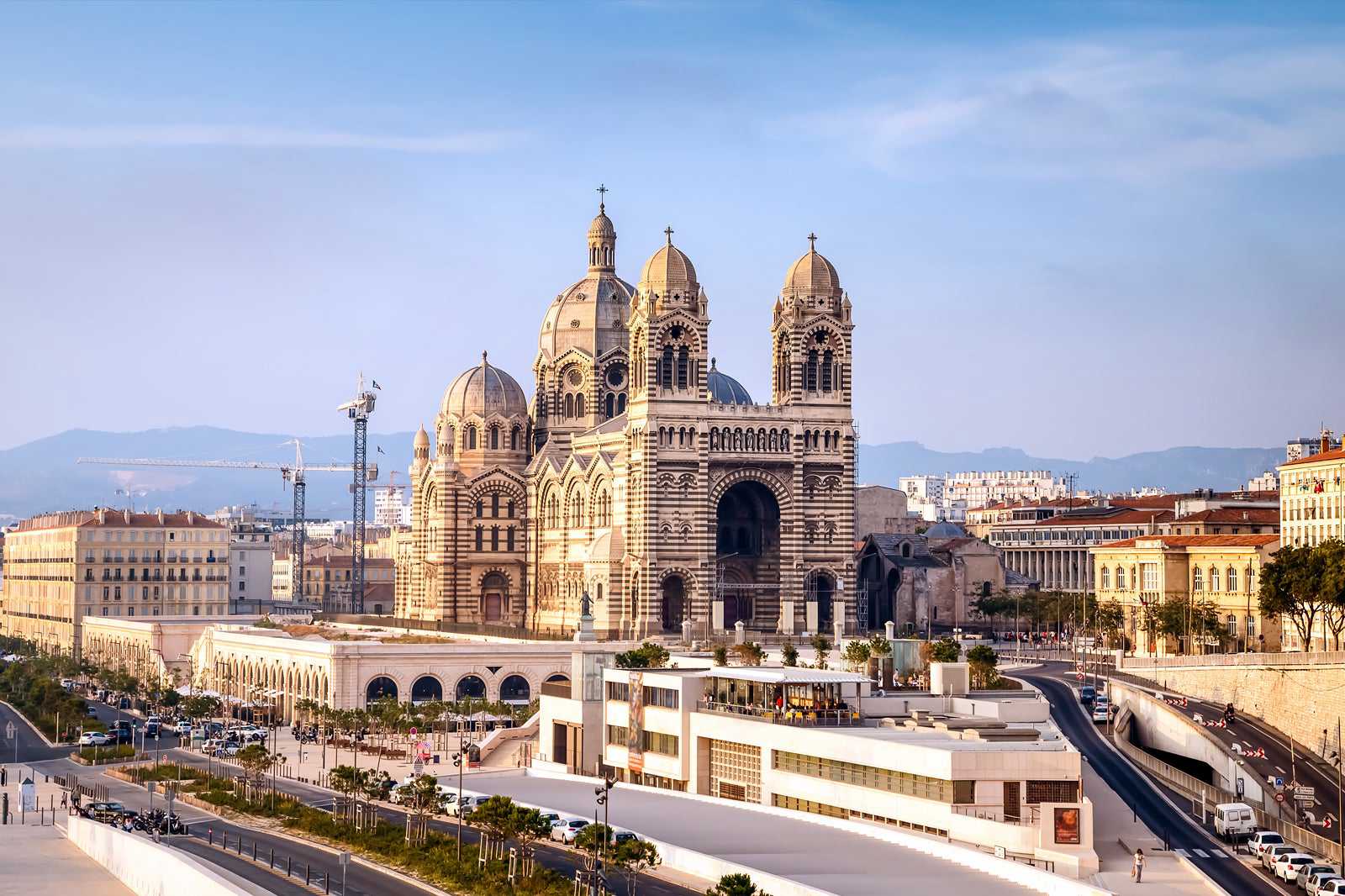
A brief history of Cathédrale La Major
During the Roman era, there was a temple dedicated to the goddess Diana at this site, followed by a baptistry in the 5th century. After an attack by Saracens in the 11th century, the church was rebuilt in a Romanesque style, using pink stone from the La Couronne quarries. Traces of this older church can still be seen in the cathedral's choir and one bay of the nave.
The first stone of the present cathedral was laid by Napoleon III in 1852. As a statement of Marseille's wealth and power, the building was designed with magnificent dimensions that can hold a congregation of up to 3,000 people. The luxurious materials that make up the distinctive striped walls include Italian marble, Tunisian onyx, porphyry, and local Cassis stone.

What are the highlights of Cathédrale La Major?
You enter Cathédrale La Major at the southern end, through distinctive red doors elaborately decorated with metal scrollwork. Glance up as you pass through and you'll see incredibly detailed Venetian mosaics decorating the arches. Inside, look out for more intricate mosaics covering the floor of the nave, a statue of Joan of Arc clutching her sword, and a marble figure of Saint Veronica tending to Christ.
A series of radiating chapels at the north end contains the tomb of Saint Eugene de Mazenod, a former bishop of Marseille, and a reliquary containing his arms and skull. Don't miss the collection of paintings of saints and religious figures in the Chapel of the Virgin. Two scale models of the cathedral are rendered in extraordinary detail, giving you an overview of the soaring architecture.
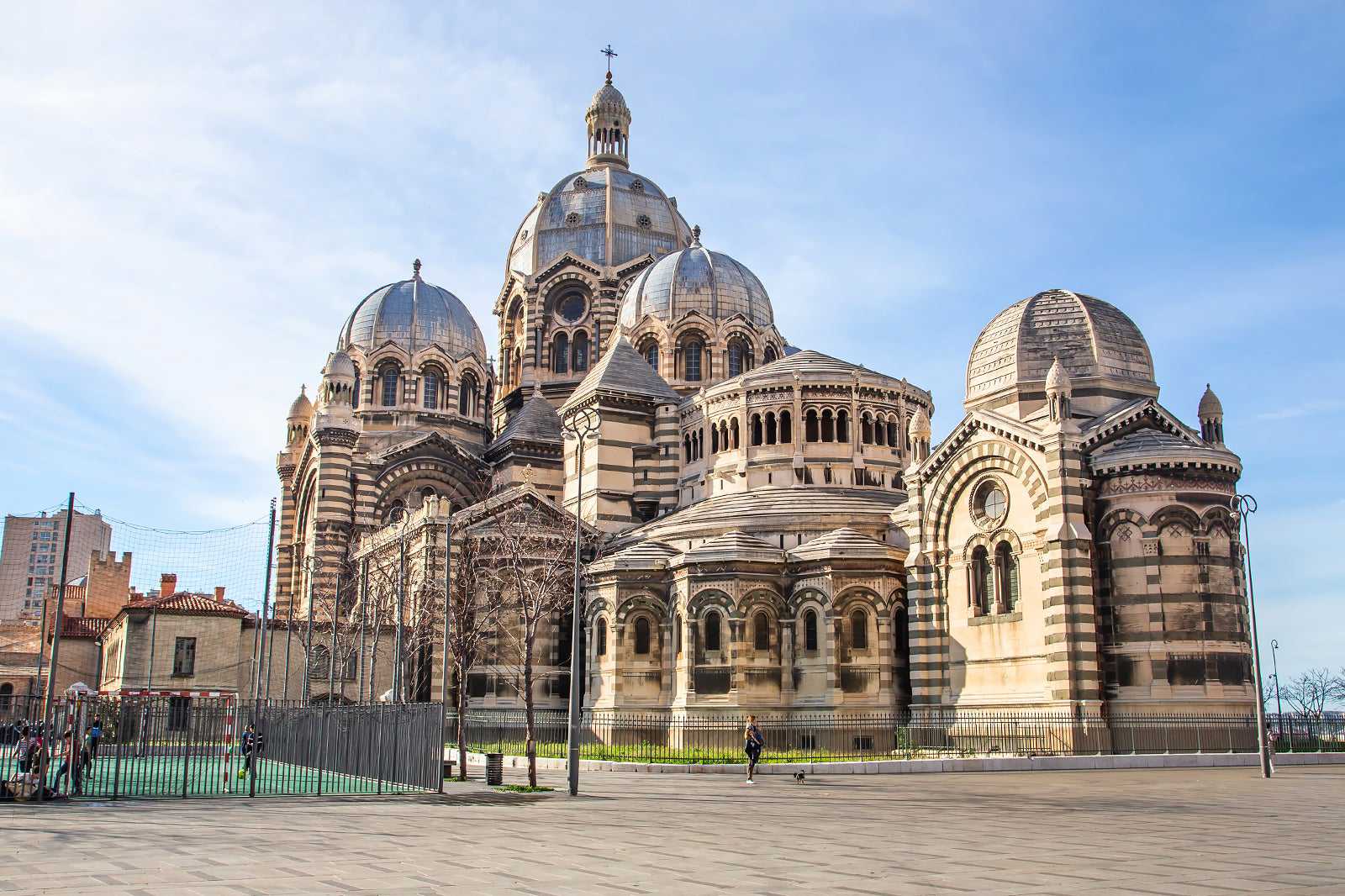
Good to know about Cathédrale La Major
To get to Cathédrale La Major, take the M2 subway line and get off at Joliette station, or take any of buses 49, 82, 82S and 582 and get off at La Major. The cathedral hosts services several evenings a week and on Sunday mornings, which tend to be busy periods. Opening times may also change during religious festivals or other holidays.
Extend your visit until sunset and you'll see the spectacular view of the cathedral lit up at night. At the base of the cathedral, 19th-century warehouses called Les Voûtes Marseille have been transformed into a fashionable shopping arcade, with bars, restaurants, and some of France's favourite fashion brands. A short walk along the waterfront is the fascinating Museum of Civilizations of Europe and the Mediterranean (MuCEM) and the picturesque gardens of Fort Saint-Jean.
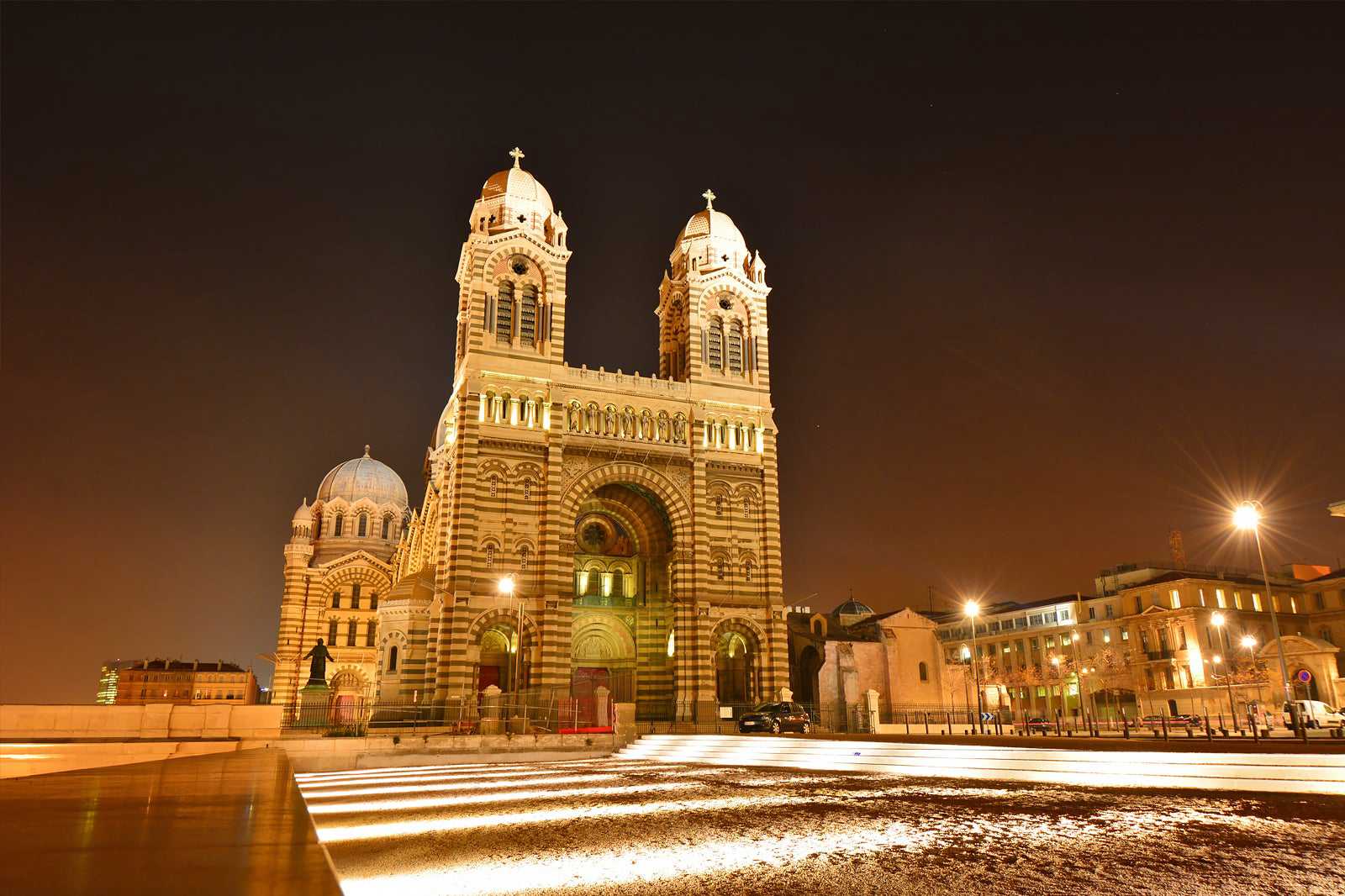
Cathédrale La Major in Marseille
Staðsetning: Place de la Major, 13002 Marseille, France
Opnunartími: Tuesday–Sunday from 10 am to 7 pm (closed on Mondays)
Símanúmer: +33 (0)4 91 90 52 87










